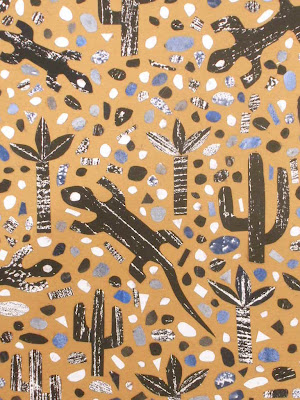Crikey - a whole 10 days have come and gone since I signed off with Charleston Farmhouse. Tempus fugit and all that.
I actually (sad soul that I am) looked up that saying to check on the spelling. And ended by knowing that it loosely comes from Virgil's Georgics: Sed fugit interea fugit irreparabile tempus, singula dum capti circumvectamur amore = But meanwhile it flees: time flees irretrievably, while we wander around, prisoners of our love of detail.
And God knows my love of detail led me into an almost trance-like state sticking down these pebbles one by one, to say nothing of giving me a touch of the screaming ab-dabs from time to time. Virgil obviously knew a thing or two. Though possibly nothing involving glue sticks and cut up bits of National Geographic ...
So here is .... ta-ra .... Prospect Cottage in Dungeness, East Sussex, former home of Derek Jarman:
Derek Jarman (1942-1994) was an English film director, artist, author and Aids and gay rights campaigner and creator of an open, fenceless, tranquil garden in an area by the sea famed as being Britain's only desert.
"You can't take life for granted in Dungeness," said a friend of Jarman shortly after his death and talking about his now famous garden. "Every bloom that flowers through the shingle is a miracle, a triumph of nature ..."
Prospect Cottage itself is a traditional tarred black fisherman's cottage which Jarman purchased in the last decade of his life with money left to him by his father.
The building and highly original garden certainly chime with the description of Jarman (in his role as film maker) as a "radical traditionalist".
The same article also described how his reading of Jung affected his films and "gave him a theoretical framework for his attempt to find the past in the present and the present in the past", a sentence that sings for me.
Anyway, he certainly strikes me as a person who lived and loved life to the full, so I have included a kind of tree of life in the foreground.
The cottage famously has lines from a John Donne poem, The Sun Rising, carved on an outside side wall. Some of my pebbles are cut up words of John Donne.
Here's a detail:
Each stone cut and glued by hand.
Thank goodness for Radio 4!

















































